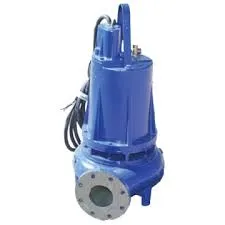Nepali
- Afrikaans
- Albanian
- Amharic
- Arabic
- Armenian
- Azerbaijani
- Basque
- Belarusian
- Bengali
- Bosnian
- Bulgarian
- Catalan
- Cebuano
- Corsican
- Croatian
- Czech
- Danish
- Dutch
- English
- Esperanto
- Estonian
- Finnish
- French
- Frisian
- Galician
- Georgian
- German
- Greek
- Gujarati
- Haitian Creole
- hausa
- hawaiian
- Hebrew
- Hindi
- Miao
- Hungarian
- Icelandic
- igbo
- Indonesian
- irish
- Italian
- Japanese
- Javanese
- Kannada
- kazakh
- Khmer
- Rwandese
- Korean
- Kurdish
- Kyrgyz
- Lao
- Latin
- Latvian
- Lithuanian
- Luxembourgish
- Macedonian
- Malgashi
- Malay
- Malayalam
- Maltese
- Maori
- Marathi
- Mongolian
- Myanmar
- Nepali
- Norwegian
- Norwegian
- Occitan
- Pashto
- Persian
- Polish
- Portuguese
- Punjabi
- Romanian
- Russian
- Samoan
- Scottish Gaelic
- Serbian
- Sesotho
- Shona
- Sindhi
- Sinhala
- Slovak
- Slovenian
- Somali
- Spanish
- Sundanese
- Swahili
- Swedish
- Tagalog
- Tajik
- Tamil
- Tatar
- Telugu
- Thai
- Turkish
- Turkmen
- Ukrainian
- Urdu
- Uighur
- Uzbek
- Vietnamese
- Welsh
- Bantu
- Yiddish
- Yoruba
- Zulu
Telephone: +86 13120555503
Email: frank@cypump.com
डिस . 30, 2024 04:05 Back to list
acid and corrosive chemical pump
Understanding Acid and Corrosive Chemical Pumps
In the industrial world, the safe handling and transfer of corrosive materials is critical to maintaining operational efficiency and safety. Acid and corrosive chemical pumps are specialized devices designed to transport aggressive substances in various sectors, including chemical manufacturing, wastewater treatment, and pharmaceuticals. This article delves into the significance, types, and operational considerations of acid and corrosive chemical pumps, emphasizing their role in modern industry.
Importance of Acid and Corrosive Chemical Pumps
The need for acid and corrosive chemical pumps arises due to the inherent dangers associated with handling corrosive substances. These materials can cause severe damage to facilities and pose serious health risks to workers if not managed properly. Effective pumps not only ensure the safe transfer of these substances but also minimize the risk of leaks and spills, which can lead to environmental contamination and expensive clean-up operations.
In industries where acids, bases, and other harmful chemicals are routinely handled, the integration of robust pumping solutions is essential. This is not just about safety; the efficiency of operations largely depends on reliable equipment that can withstand the harsh conditions posed by corrosive chemicals.
Types of Acid and Corrosive Chemical Pumps
There are several types of pumps specifically designed for handling acid and corrosive chemicals, each with unique features suited for various applications
1. Diaphragm Pumps These pumps utilize a flexible diaphragm to create a barrier between the chemical and the pump mechanism. They are self-priming and can handle thick, viscous materials, making them ideal for certain corrosive applications.
2. Magnetic Drive Pumps These pumps use a magnetic coupling to transfer power from the motor to the impeller without any direct contact, ensuring no leakage of the hazardous material. They are often used for chemical applications where contamination of the fluid is a concern.
3. Peristaltic Pumps Utilizing a rotating mechanism that compresses a flexible tube to push fluid, these pumps are excellent for transferring slurries and viscous fluids. They are also easy to clean and can handle aggressive acids without deterioration.
acid and corrosive chemical pump

4. Chemical Process Pumps Specifically engineered to bear the highest levels of wear and corrosion, these pumps are constructed from highly resistant materials such as PTFE, Hastelloy, or special stainless steels.
Operational Considerations
Operating an acid and corrosive chemical pump comes with several considerations to ensure efficiency and safety
- Material Compatibility It is crucial to select pump materials that can withstand the specific chemicals being handled. Failure to do so might lead to rapid degradation of the pump, leading to leaks and operational failures.
- Sealing Mechanisms Proper sealing is vital to prevent leakage. Many corrosive pumps are designed with advanced seals to ensure operational integrity, even under high pressure.
- Maintenance Regular maintenance and inspection schedules should be established to monitor the pump's condition. This includes checking for signs of wear, leaks, or corrosion that could compromise the system's integrity.
- Safety Protocols Operators should follow rigorous safety procedures when handling acid and corrosive materials. This includes using personal protective equipment (PPE) and ensuring that emergency protocols are in place.
Conclusion
Acid and corrosive chemical pumps are indispensable components in industrial settings that require the handling of hazardous materials. Their specialized design not only protects workers and the environment but also contributes to the efficiency and reliability of industrial processes. As industries continue to evolve and innovate, the importance of these specialized pumps will only grow, reinforcing the need for continued advancements in pump technology and safety standards. Adopting the appropriate pump for the right application can lead to significant benefits, including reduced downtime, enhanced safety, and improved overall productivity.
-
Custom Drilling Mud and Slurry Pump Supplier - High Efficiency, Tailored Solutions
NewsJun.10,2025
-
Supply Vertical Submersible Sewage Pump High-Efficiency WQ/QW Pumps Supplier
NewsJun.10,2025
-
Premium Sewage Ejection System & Pumps Efficient Waste Removal
NewsJun.09,2025
-
Premium Wholesale Slurry Pump Impellers Durable & Efficient Slurry Handling
NewsJun.09,2025
-
Top Sewage Pump Companies Durable Industrial Solutions for Efficiency
NewsJun.09,2025
-
Heavy Duty Slurry Pumps - OEM High Performance & Bulk Wholesale
NewsJun.09,2025










